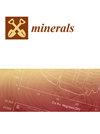The Role of Mineral and Organic Composition on the Phosphorus Content of Prehistoric Pottery (Middle Neolithic to Late Bronze Age) from NW Spain
IF 2.2
4区 地球科学
Q2 GEOCHEMISTRY & GEOPHYSICS
引用次数: 0
Abstract
Phosphorus is a key element for identifying past human activity. Recently, phosphorus analyses have been extended to archaeological objects, aiming at distinguishing how depositional contexts contribute to its enrichment. In archaeological pottery, phosphorus might depend on several manufacturing and postdepositional processes (i.e., addition of organic temper, pigments, diagenetic incorporation). We analyzed by XRD, XRF, and mid-infrared (FTIR-ATR) spectroscopy 178 pots from eight NW Spain archaeological sites. These sites encompass different chronologies, contexts, and local geology. The phosphorus content was highly variable (224–27,722 mg kg−1) overall but also between archeological sites (1644 ± 487 to 13,635 ± 6623 mg kg−1) and within archaeological sites (4–36, max/min ratio). No phosphate minerals were identified by XRD nor FTIR-ATR, but correlations between phosphorus content and MIR absorbances showed maxima at 1515 and 980 cm−1, suggesting the presence of two sources: one organic (i.e., phosphorylated aromatic compounds) and another inorganic (i.e., albite and K-feldspar). Phosphorylated aromatics were most likely formed during pottery firing and were preserved due to their high resistance to temperature and oxidation. Meanwhile, albite and K-feldspar are among the P-bearing minerals with higher P concentrations. Our results suggest that P content is related to intentional and non-intentional actions taken in the pottery production process.矿物和有机成分对西班牙西北部史前陶器(新石器时代中期至青铜时代晚期)磷含量的影响
磷是确定过去人类活动的关键因素。最近,磷分析已扩展到考古物品,旨在区分沉积环境如何导致磷的富集。在考古陶器中,磷可能取决于几个制造和沉积后过程(即添加有机物、颜料、成岩作用)。我们通过 XRD、XRF 和中红外(FTIR-ATR)光谱分析了来自西班牙西北部八个考古遗址的 178 件陶器。这些遗址的年代、背景和当地地质各不相同。总体而言,磷含量变化很大(224-27,722 毫克/千克-1),但考古遗址之间(1644 ± 487 至 13,635 ± 6623 毫克/千克-1)和考古遗址内部(4-36,最大/最小比)的磷含量变化也很大。XRD 和 FTIR-ATR 均未发现磷酸盐矿物,但磷含量与 MIR 吸光度之间的相关性显示,在 1515 和 980 cm-1 处存在最大值,表明存在两个来源:一个是有机来源(即磷化芳香族化合物),另一个是无机来源(即白云石和 K 长石)。磷酸化芳香族化合物很可能是在陶器烧制过程中形成的,由于其耐高温和抗氧化性而得以保存。同时,白云石和钾长石是含 P 较高的矿物。我们的研究结果表明,P 含量与陶器生产过程中的有意和无意行为有关。
本文章由计算机程序翻译,如有差异,请以英文原文为准。
求助全文
约1分钟内获得全文
求助全文
来源期刊

Minerals
MINERALOGY-MINING & MINERAL PROCESSING
CiteScore
4.10
自引率
20.00%
发文量
1351
审稿时长
19.04 days
期刊介绍:
Minerals (ISSN 2075-163X) is an international open access journal that covers the broad field of mineralogy, economic mineral resources, mineral exploration, innovative mining techniques and advances in mineral processing. It publishes reviews, regular research papers and short notes. Our aim is to encourage scientists to publish their experimental and theoretical results in as much detail as possible. There is no restriction on the length of the papers. The full experimental details must be provided so that the results can be reproduced.
 求助内容:
求助内容: 应助结果提醒方式:
应助结果提醒方式:


